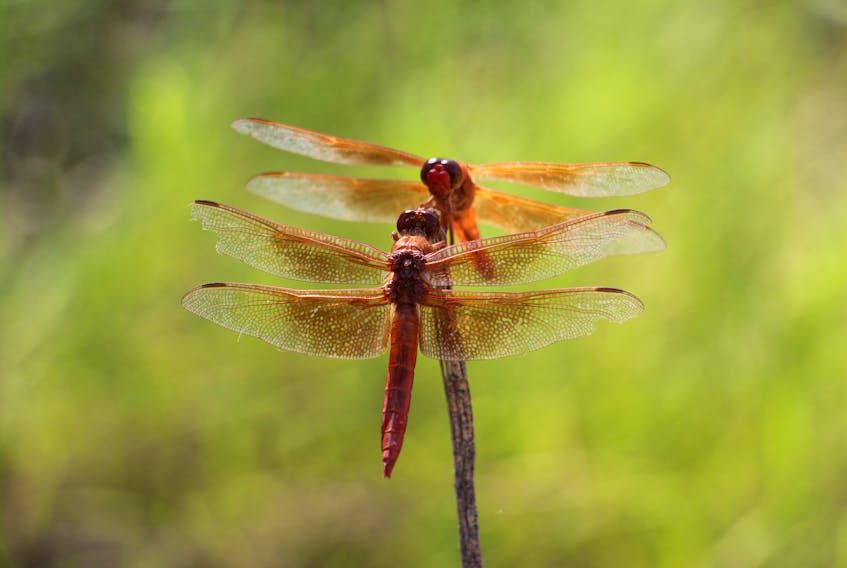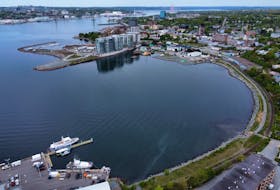“If history repeats itself, and the unexpected always happens, how incapable must Man be of learning from experience.” — George Bernard Shaw
If a reporter wrote a story about the government pouring money into a widget factory, without acknowledging that millions of dollars from the public purse had already been spent on previous widget operations that failed spectacularly, well, you’d say that reporter had failed to do some pretty basic research.

You’d say the coverage lacked crucial context and showed a lack of critical thinking.
You’d be right. And you’d probably view that reporter as being less than credible.
So why is it that we elect governments that do the same — neglecting to do due diligence, diving headlong into rabbit holes that have been delved into many times before, and doing it over and over without learning a thing?
Right now, on opposite ends of the country — in this province and British Columbia — two governments are grappling with mega-project money pits they inherited from prior administrations.
The projects have been stumbling along almost in tandem, with missteps so similar, it’s hard to believe the same folks aren’t running the two.
Muskrat Falls was first out of the gate, sanctioned in December 2012. The Site C dam in B.C. got the go-ahead two years later.
A reader who is following the Muskrat Falls inquiry into the $12.7-billion Muskrat Falls recently sent me an article from The Narwhal, an excellent online investigative journalism magazine based in Victoria, B.C., that probes environmental issues in Canada.
The Aug. 24, 2018 piece by Sarah Cox describes a situation strikingly similar to our own mega-mess.
“Back in December,” she writes, “as the price tag for the Site C dam spiralled another $2 billion, B.C. Premier John Horgan announced the creation of a new board for ‘enhanced oversight’ to ensure the project would be delivered on time and within its newly inflated budget.”
Change the date to March 2014, throw Muskrat Falls and Progressive Conservative Tom Marshall into the mix instead of Site C and NDPer John Horgan, and you’ve got yourself a boondoggle doppelgänger.
You have to ask yourself, do politicians even talk to their counterparts in other provinces or do they stay in their own silos, cocooned within their partisan politics? Pick up the phone, for God’s sake.
Just as here with the Tories and Muskrat Falls, the Liberal government that proposed Site C also made sure its public utilities board was shut out of the oversight process.
As with Muskrat Falls (price tag: $12.7 billion), Site C is the most expensive public project in its province’s history, at $10.7 billion — billions more than was anticipated — and behind schedule.
You have to ask yourself, do politicians even talk to their counterparts in other provinces or do they stay in their own silos, cocooned within their partisan politics?
In that province as in this one, the project got started ahead of sanction, with public assurances that “the dam is the most cost-effective way to meet the province’s electricity needs.”
“Who is ultimately responsible?” The Narwhal article asks. “It was a B.C. Liberal government that made the decision to proceed with Site C in the first place, but the NDP decided to continue the project, following pressure from NDP insiders and construction trade unions that donated generously to the party. The NDP now shoulders responsibility for every single Site C project cost overrun and schedule delay.”
In this province, the Liberals said Muskrat Falls was too advanced to be halted when they took over from the Tories in 2015. Did they also face pressures to keep it going?
Had the Tories faced pressure to build it in the first place?
This is mere speculation, but interesting to ponder.
In British Columbia, as here, the Crown corporation running the hydroelectric project has been criticized for its lack of transparency and accountability. There, as here, people have concerns about losing valuable hunting and fishing grounds.
Revelations about questionable practices and secrecy surrounding contracts for Site C are still trickling out, just as tidbits about who knew what when with Muskrat Falls are coming to light at the public inquiry.
And there, as here, us ordinary folk are left shaking our heads and gnashing our teeth, wondering just who the heck was watching our money.
Recent columns by this author
PAM FRAMPTON: Muskrat Falls — any lessons learned?
PAM FRAMPTON: Public the last to know the price of Muskrat Falls
Pam Frampton is The Telegram’s managing editor. Email [email protected]. Twitter: pam_frampton









